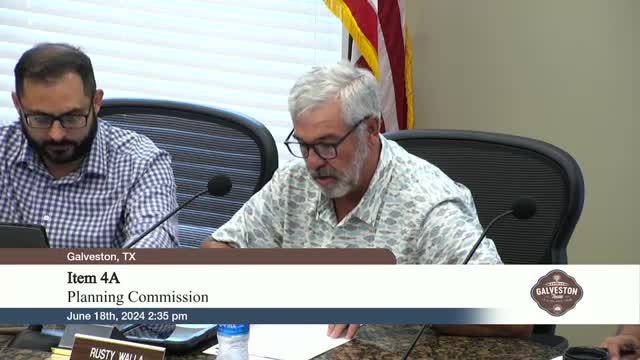Housing Debate Intensifies Over Affordable Solutions
June 18, 2024 | Galveston , Galveston County, Texas

This article was created by AI summarizing key points discussed. AI makes mistakes, so for full details and context, please refer to the video of the full meeting. Please report any errors so we can fix them. Report an error »

During a recent government meeting, discussions centered on the implications of alternative dwelling units (ADUs) and their potential impact on affordable housing in the urban core. One participant highlighted the historical context of these units, noting that many date back to when they served as quarters for staff on properties.
The conversation shifted towards the benefits for builders and developers, particularly the ability to subdivide vacant lots and access them via alleys, effectively reducing land costs. While this could be seen as advantageous for development, concerns were raised about the actual benefits to affordable housing.
A member with extensive experience on the Redevelopment Authority and Housing Finance Corporation boards expressed skepticism about the effectiveness of ADUs in addressing the city's housing affordability crisis. They pointed out that despite the presence of 121 homes sold under $350,000 in the last six months, only four of these were new constructions, suggesting that current strategies may not significantly alleviate the affordability issue.
The participant concluded that while the city is facing challenges in housing affordability, the proposed measures involving ADUs may not provide the substantial solutions needed to tackle the problem effectively.
The conversation shifted towards the benefits for builders and developers, particularly the ability to subdivide vacant lots and access them via alleys, effectively reducing land costs. While this could be seen as advantageous for development, concerns were raised about the actual benefits to affordable housing.
A member with extensive experience on the Redevelopment Authority and Housing Finance Corporation boards expressed skepticism about the effectiveness of ADUs in addressing the city's housing affordability crisis. They pointed out that despite the presence of 121 homes sold under $350,000 in the last six months, only four of these were new constructions, suggesting that current strategies may not significantly alleviate the affordability issue.
The participant concluded that while the city is facing challenges in housing affordability, the proposed measures involving ADUs may not provide the substantial solutions needed to tackle the problem effectively.
View full meeting
This article is based on a recent meeting—watch the full video and explore the complete transcript for deeper insights into the discussion.
View full meeting
